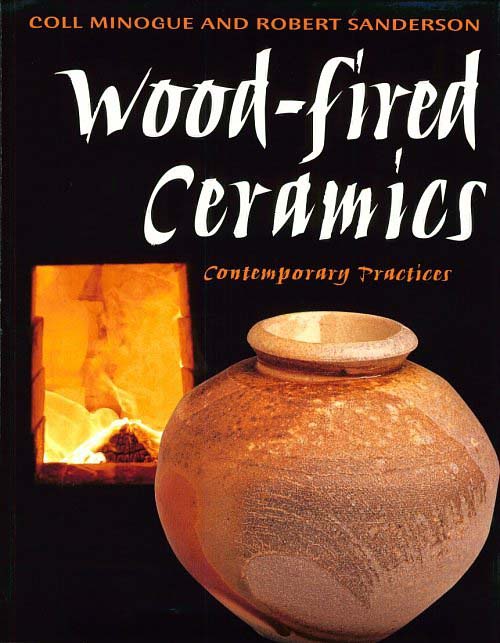
The story of The Log Book began some ten years prior to the publication of the first issue. Whilst participating in the 2nd Australian Woodfire Conference - Woodfire '89, as the only participants from the British Isles, we were asked many questions about woodfiring in our part of the world. Having lived in relative isolation in rural Scotland for the previous five years, while establishing our studio and building our kiln (since our return from travelling and working in Australia and New Zealand), we had answers to some, but certainly not all of these questions. We decided to find out more about woodfiring in Britain, with the primary aim of forming a basis for comparison with woodfiring practices in countries where such information had already been compiled, namely the USA in 1982 (see Studio Potter Vol.11, No.2), and Australia in 1986 (see Woodfire '86 Proceedings).
During the summer of 1990 we conducted the first survey on woodfiring to be carried out in Britain. The survey findings (which were published in Ceramic Review, No.131), combined with participation in further international woodfire events prompted us to continue our investigation into contemporary woodfire practices. An outcome of the survey was that we were commissioned to write a book on the subject of wood-fired ceramics. Prior to the completion of the manuscript we decided to establish a magazine dedicated to woodfiring and wood-fired ceramics, as we felt that there was a need for an ongoing dialogue between woodfirers on an international level. We already had the name - The Log Book - inspired by all those notes and observations recorded when firing woodfire kilns.
The support and encouragement that we received for our idea for such a magazine whilst participating in the Different Stokes woodfire conference, organised by Chuck Hindes Professor of Ceramics at the University of Iowa, USA, in 1999, was the catalyst for us to proceed with our plan. As things transpired the first issue of The Log Book was published in the same month as our book Wood-fired Ceramics Contemporary Practices (A&C Black, UK; University of Pennsylvania Press, USA; Craftsman House, Australia), in February 2000.
Initially the magazine was printed in a single colour - not black, but a turquoisey-blue-black - which we continued to use for the following seven years. In 2006, Jason Hess, head of the ceramics programme at Northern Arizona University in Flagstaff (USA), organised the 20+Years of the Tozan Kilns international woodfire conference. Preparing to participate in this event was our motivation to have The Log Book printed in full colour.
But The Log Book was about more than publishing articles. We viewed the promotion and advancement of woodfiring and wood-fired ceramics as part of our broader remit. As editors, we considered that supporting, encouraging, and acknowledging young and emerging woodfirers was an important aspect of The Log Book. To this end we established The Log Book Award, made to artists based on work selected from exhibitions held to coincide with specialist woodfire conferences, or other events.
From 2008 the first issue of The Log Book to be published each year focussed on a particular aspect of woodfiring. These special issues included Woodfire Salt-Glaze, Young Woodfirers, Developing Clay Bodies, Glazes for Woodfire, Woodfire Soda Glaze, and Wood-fired Pots. Combined they form an important reference source on these different aspects of woodfiring.
The practice of woodfiring by its nature generally necessitates living and working in somewhat isolated, rural locations. Acting as a vehicle of communication between practitioners on an international scale, The Log Book contributed significantly to the feeling of belonging to the international woodfire movement.
This is an abridged version of the article published in New Ceramics, 2014.

Contemporary Practices
by Coll Minogue and Robert Sanderson
There has been a dramatic increase in the number of potters firing with wood, particularly within the last 30 years. At face value woodfiring can be described as the process whereby wood is the fuel used to fire pottery kilns, which have been specifically designed for that purpose. In an age when technology has produced kilns capable of attaining high temperatures in a matter of a couple of hours, it is perhaps remarkable that many potters choose to build and fire kilns which are labour intensive and require constant attention throughout the entire period of the firing, which may last up to several days. There is obviously then more to woodfiring than the process itself.
For the woodfirers of today woodfiring represents an entire aesthetic which evolves from personal choices of both materials and processes. Some seek 'the quiet touch of the flame' accentuating a glazed surface, or giving subtle ash effects on unglazed surfaces. Others combine woodfiring and salt or soda glazing to achieve satisfying effects. Yet others want their work to 'really look wood-fired', bearing evidence of the intensity of fire over many days of high temperature firing. What they all have in common is an attraction to the process of woodfiring, which allows them to be both actively and creatively involved in the firing.
In Wood-fired Ceramics, Coll Minogue and Robert Sanderson briefly describe the development of the main types of wood-fired kilns used by today's potters. They then present the aesthetic aims, working practices and kilns of an international group of artists. Kiln-firing logs; clay, glaze and slip recipes; and kiln plans are also included. The work, by over 60 artists, which illustrates the text, is representative of the diversity of styles in contemporary wood-fired ceramics.
For further information contact:
www.upenn.edu/pennpress


